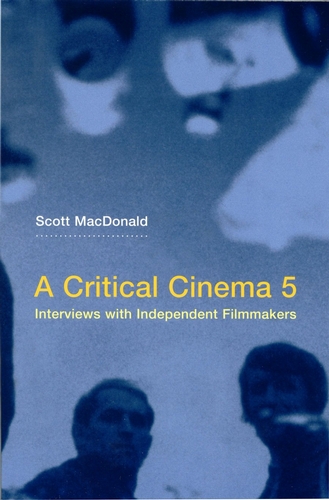Daniel Barnett: Movement as Meaning: In Experimental Film (2008)
Filed under book | Tags: · cinema, digital cinema, experimental film

This book offers sweeping and cogent arguments as to why analytic philosophers should take experimental cinema seriously as a medium for illuminating mechanisms of meaning in language. Using the analogy of the movie projector, Barnett deconstructs all communication acts into functions of interval, repetition and context. He describes how Wittgenstein’s concepts of “family resemblance and language games” provide a dynamic perspective on the analysis of acts of reference. He then develops a hyper-simplified formula of “movement as meaning” to discuss, with true equivalence, the process of reference as it occurs in natural language, technical language, poetic language, painting, photography, music, and of course, cinema. Barnett then applies his analytic technique to an original perspective on cine-poetics based on Paul Valery’s concept of omnivalence, and to a projection of how this style of analysis, derived from analog cinema, can help us clarify our view of the digital mediasphere and its relation to consciousness. Informed by the philosophy of Quine, Dennett, Merleau-Ponty as well as the later work of Wittgenstein, among others, he uses the film work of Stan Brakhage, Tony Conrad, A.K. Dewdney, Nathaniel Dorsky, Ken Jacobs, Owen Land, Saul Levine, Gregory Markopoulos Michael Snow, and the poetry of Basho, John Cage, John Cayley and Paul Valery to illustrate the power of his unique perspective on meaning.
Key words and phrases
language game, phi phenomenon, Maltese cross, Otto Muehl, Saul Levine, Kinesics, haiku, optical printer, Cross Movement, meme, movie projector, Ken Jacobs, mesostic, digital cinema, polyvalence, Bolex, ontological, P-frame, persistence of vision, George Landow
Publisher Rodopi, 2008
ISBN 9042023856, 9789042023857
Length 240 pages
More info (publisher)
More info (google books)
Jonathan Beller: The Cinematic Mode of Production. Attention Economy and the Society of the Spectacle (2006)
Filed under book | Tags: · attention, attention economy, capitalism, cinema, film, film theory, labour, marxism, spectacle

“Cinema brings the industrial revolution to the eye,” writes Jonathan Beller, “and engages spectators in increasingly dematerialized processes of social production.” In his groundbreaking critical study, cinema is the paradigmatic example of how the act of looking has been construed by capital as “productive labor.” Through an examination of cinema over the course of the twentieth century, Beller establishes on both theoretical and historical grounds the process of the emergent capitalization of perception. This process, he says, underpins the current global economy.
By exploring a set of films made since the late 1920s, Beller argues that, through cinema, capital first posits and then presupposes looking as a value-productive activity. He argues that cinema, as the first crystallization of a new order of media, is itself an abstraction of assembly-line processes, and that the contemporary image is a politico-economic interface between the body and capitalized social machinery. Where factory workers first performed sequenced physical operations on moving objects in order to produce a commodity, in the cinema, spectators perform sequenced visual operations on moving montage fragments to produce an image.
Beller develops his argument by highlighting various innovations and film texts of the past century. These innovations include concepts and practices from the revolutionary Soviet cinema, behaviorism, Taylorism, psychoanalysis, and contemporary Hollywood film. He thus develops an analysis of what amounts to the global industrialization of perception that today informs not only the specific social functions of new media, but also sustains a violent and hierarchical global society.
Publisher University Press of New England, 2006
ISBN 1584655836, 9781584655831
332 pages
review (Robert Moses Peaslee, Journal of Communication Inquiry)
PDF (no OCR; some pages missing; updated on 2012-11-4)
Download a 2003 paper (published in Culture, Theory & Critique 44(1), 2003, pp 91-106; added on 2012-10-20)
Scott MacDonald: A Critical Cinema 5: Interviews with Independent Filmmakers (2006)
Filed under book | Tags: · 1960s, cinema, experimental film, film, film history

A Critical Cinema 5 is the fifth volume in Scott MacDonald’s Critical Cinema series, the most extensive, in-depth exploration of independent cinema available in English. In this new set of interviews, MacDonald engages filmmakers in detailed discussions of their films and of the personal experiences and political and theoretical currents that have shaped their work. The interviews are arranged to express the remarkable diversity of modern independent cinema and the interactive community of filmmakers that has dedicated itself to producing forms of cinema that critique conventional media.
Publisher University of California Press, 2006
ISBN 0520245954, 9780520245952
451 pages
PDF (updated on 2013-1-23)
Comment (0)
